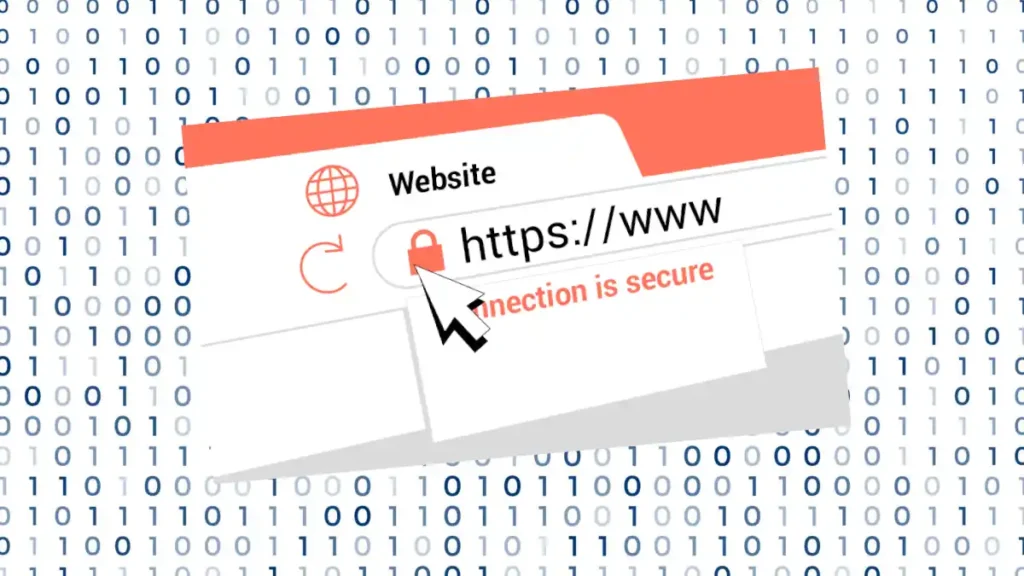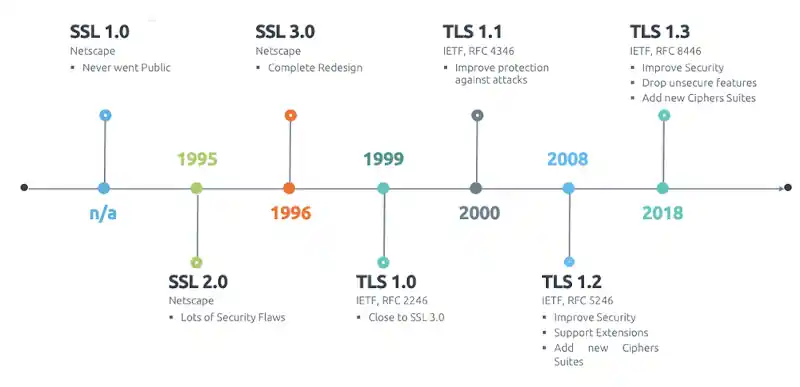In navigating the vast digital realm, the role of SSL in cybersecurity has become increasingly paramount. SSL, or Secure Socket Layer, acts as the bedrock of online security, ensuring that data transfers between browsers and servers remain confidential and intact. As cyber threats magnify in complexity, the symbiotic relationship between cybersecurity and SSL intensifies, making it an essential line of defense against malicious intercepts.
In this article:
- Role of SSL in Cybersecurity
- SSL vs. TLS: Debunking the Myth
- SSL Certificates Explained: Layers of Trust and Authentication
- Conclusion
- Further Reading
For many internet users, SSL is synonymous with the comforting padlock icon in the address bar—an emblem of safety in the Wild West of the web. But its significance runs much deeper than just visual assurance, forming a critical bastion in the multilayered fortress of cybersecurity protocols.

Role of SSL in Cybersecurity
In the vast realm of cybersecurity, Secure Sockets Layer (SSL) stands as a cornerstone. Originally designed to ensure secure internet connections, it laid the groundwork for the creation of encrypted links between a web server and a browser. This encryption ensures that all data passed between the server and the browser remain private, safeguarding information like credit card numbers, passwords, and other sensitive data from potential cyber threats.
While the term SSL is still widely used, the current standard technology for keeping an internet connection secure and safeguarding any sensitive data that is being sent between two systems is Transport Layer Security (TLS). It prevents criminals from reading and modifying any information transferred, including potential personal details.
The digital landscape is teeming with potential threats, making cybersecurity paramount. SSL, despite its modern-day iterations and terminological shifts, remains instrumental in this digital defense. One may wonder about the cost of such a crucial line of defense, but fortifying your digital presence doesn’t have to break the bank. For those on a budget, there are providers offering low cost or cheap SSL certificates that don’t compromise on security. In essence, the role of SSL in cybersecurity is to instill trust, and with affordable options available like Comodo SSL, RapidSSL, Sectigo SSL, that fits with all sizes of businesses to provide a secure online experience.
SSL vs. TLS: Debunking the Myth
The digital landscape is riddled with terminologies that often become intertwined in the minds of professionals and enthusiasts alike. One such commonly conflated pair is SSL (Secure Socket Layer) and TLS (Transport Layer Security). To understand the role of SSL in cybersecurity, it’s essential first to disentangle these two terms and set the record straight.
The Secure Socket Layer (SSL), a creation of Netscape in the mid-1990s, was developed with a clear aim: ensuring encrypted communication between web browsers and servers. Throughout its life, it evolved over several versions, culminating in SSL 3.0. However, this would be its final iteration.
Emerging as the successor to SSL, Transport Layer Security (TLS) was introduced to the digital world by the Internet Engineering Task Force (IETF) in 1999. TLS 1.0, the inaugural version, was fundamentally based on SSL 3.0, crafted with the intent of mending vulnerabilities inherent in the latter. As time ticked on, more advanced versions of TLS came to the fore, including TLS 1.1, TLS 1.2, and the recent TLS 1.3. Each release further fortified the protocol’s security parameters.

Given its superior security features, it’s no wonder that TLS has largely overshadowed and replaced SSL in the world of encrypted web traffic. The inherent vulnerabilities discovered in SSL 3.0 relegated it to the pages of history. The paradox, however, is that the term “SSL” has clung onto collective consciousness. Modern encrypted web traffic largely runs on the prowess of TLS, even though SSL often gets the colloquial nod. The certificates facilitating encrypted connections for websites are frequently termed “SSL certificates,” even when they predominantly operate in tandem with the TLS protocol.
In essence, while the term “SSL” might still echo in boardrooms and coffee shops, the unsung hero safeguarding contemporary digital communications is undeniably TLS. As we dissect the role of SSL in cybersecurity, remember that the principles of encrypted and authenticated communication upheld by both SSL and TLS remain constant. However, beneath the surface, in the bustling data highways of today’s interconnected world, TLS is the protocol steering the ship.
SSL Certificates Explained: Layers of Trust and Authentication
When we talk about SSL or even its modern successor, TLS, the conversation invariably drifts towards SSL certificates. But what are these certificates, and why are they the cornerstone of the secure digital ecosystem? Let’s dive deep into the world of SSL certificates, peeling back the layers to understand the intricate weave of trust and authentication they facilitate.
At its core, an SSL certificate is a small data file that digitally binds a cryptographic key to an organization’s details. When installed on a web server, it activates the padlock and the HTTPS protocol, allowing secure connections from a web server to a browser.
Types of SSL Certificates
- Domain Validated (DV) Certificates: The simplest of the lot, these certificates only confirm the domain’s ownership. They’re typically issued swiftly and offer a basic encryption level, ideal for blogs or informational sites.
- Organization Validated (OV) Certificates: A step up from DV, OV certificates validate both the domain’s ownership and certain organizational details, like the company’s name and location. They’re suited for businesses that seek a balance between robustness and cost-effectiveness.
- Extended Validation (EV) Certificates: The gold standard of SSL certificates, EV certificates, involve rigorous checks. A company must prove its legal, physical, and operational existence and verify its rights to the domain name. The reward? A green address bar, the most conspicuous indicator of a site’s trustworthiness.
Why Are SSL Certificates Pivotal?
- Authentication and Trust: When users visit a website, they want assurance that they’re communicating with the genuine entity and not an imposter. SSL certificates play the crucial role of third-party vouching. Certificate Authorities (CAs) ensure that an SSL certificate for a particular domain indeed belongs to the entity claiming ownership. It’s like a trusted friend vouching for someone at a gathering.
- Data Encryption: SSL certificates enable data encryption during transmission. When a user inputs sensitive details, like credit card information or passwords, this data gets encrypted. This will ensure prying eyes can’t decipher it even if intercepted.
- Phishing and Cyberattacks: Fraudulent sites, attempting to masquerade as legitimate ones, find it hard to obtain genuine SSL certificates. Hence, a visible SSL certificate acts as a deterrent to phishing attacks.
- Boosting SEO and Consumer Confidence: Google ranks sites with SSL higher than those without. Moreover, users tend to trust and engage more with sites that have clear SSL indicators. Just like the padlock or the green address bar.
In the vast expanse of the digital world, the SSL certificate stands as a beacon of trust and authenticity. It whispers a silent promise to every visitor, ensuring that their digital sojourn remains confidential, authentic, and uninterrupted. Whether you’re an entrepreneur launching a new e-commerce site or a regular user inputting personal details, understanding the bedrock of SSL certificates empowers you to navigate the digital realm with informed confidence.
Conclusion: The Indispensable Role of SSL in Cybersecurity
In the constantly evolving digital landscape, the role of SSL in cybersecurity remains both foundational and critical. While SSL’s technical successor, TLS, might be the driving force behind present-day secure connections, the legacy and terminology of SSL persist.
This testament to its importance is mirrored in the widespread use of SSL certificates that act as sentinels, guarding against a myriad of cyber threats. In an era where data breaches and cyberattacks are ever-looming, understanding and appreciating the role of SSL in cybersecurity equips individuals and businesses alike to fortify their digital fortresses and navigate the online world with greater confidence and security.
Further Reading
For those who wish to delve deeper into the intricate web of SSL and cybersecurity, here are some recommended readings:
- “Bulletproof TLS and PKI, Second Edition: Understanding and Deploying SSL/TLS and PKI to Secure Servers and Web Applications” by Ivan Ristić. This book is a comprehensive guide to deploying secure servers and web applications. It covers everything from the basics of SSL to advanced topics.
- “SSL & TLS Essentials: Securing the Web” by Stephen A. Thomas. Thomas’s book provides an overview of the protocols and their implementation, catering to both novices and seasoned tech professionals.
- “Network Security Essentials” by William Stallings. While not solely focused on SSL, this book covers a broad range of cybersecurity topics. It’s certainly an invaluable resource for those keen to understand the broader landscape.
- “The Tangled Web: A Guide to Securing Modern Web Applications” by Michal Zalewski. This book touches upon the broader aspects of web security, providing context to the role SSL plays within it.